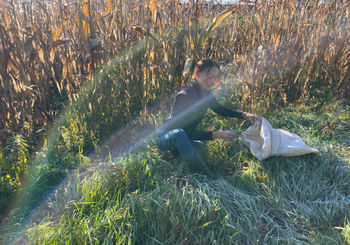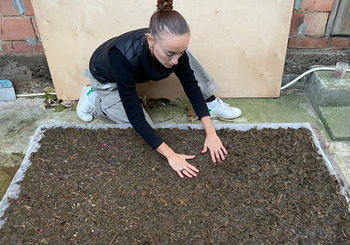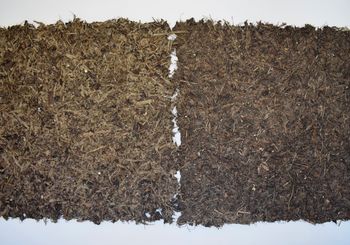Skin of a Wounded Land
Larysa Kozhokar
Skin of a Wounded Land is a large-scale paper membrane made from plants and seeds gathered in western Ukraine.
Formed through the ancient process of papermaking — boiling, beating, and reshaping plants by hand — it transforms the land’s fibers into a fragile, skin-like surface that remembers where it comes from.
Inside are seeds of buckwheat, wheat, pumpkin, and sunflower — plants rooted in Ukrainian soil and culture — carrying the potential for renewal.
The work reflects on transformation not as destruction but as translation: a passage between loss and regeneration.
As philosopher Jane Bennett writes, “matter vibrates with its own vitality.” This piece listens to that vitality, allowing the material itself to speak.
After its exhibition, the membrane will be returned to the same soil it came from, completing its cycle — what was taken from the land will return to it, and life may begin again.

In the first stage, I collected local plants, dry grasses, and fragments of soil — organic traces that carry the memory of the land. Each element was chosen for its tactile presence and its ability to hold time within itself. This process became a gesture of listening: gathering not only materials, but stories, voices, and silences rooted in the landscape.



The collected materials were blended with water, turned into pulp, and formed by hand into sheets of paper. Each layer carries visible fibers, seeds, and fragments of earth. This stage transformed raw matter into a living membrane — a fragile surface that holds traces of regeneration, where destruction and creation coexist within the same gesture.




The final work consists of two handmade paper membranes placed side by side, attached delicately to the wall with fine nails. The piece exists between vulnerability and persistence — an embodied dialogue between material, memory, and renewal. It invites viewers to pause, to breathe, and to listen to the quiet resilience of matter itself.






